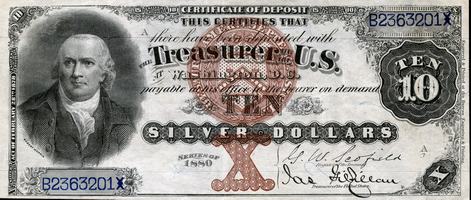
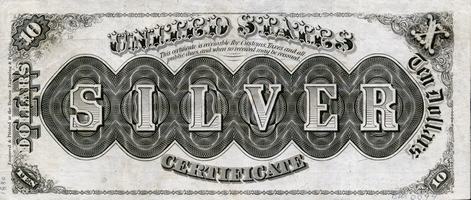
Robert Morris
 CLICK HERE to see the 1878 note
CLICK HERE to see the 1878 note

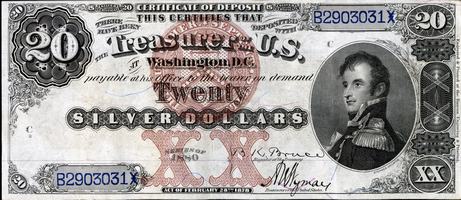
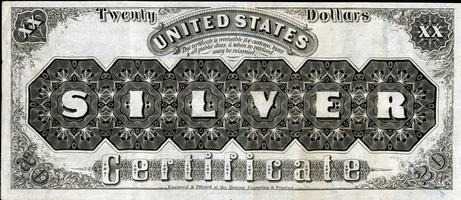
Stephen Decatur
 CLICK HERE to see the 1878 note
CLICK HERE to see the 1878 note

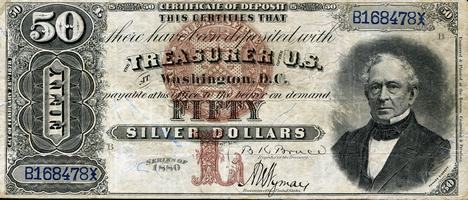
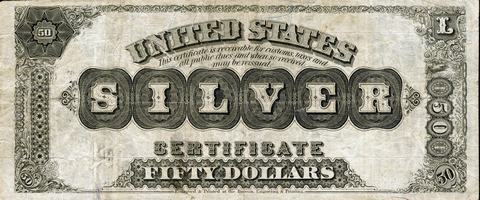
Edward Everett
 CLICK HERE to see the 1878 note
CLICK HERE to see the 1878 note

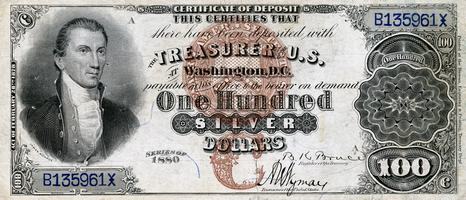
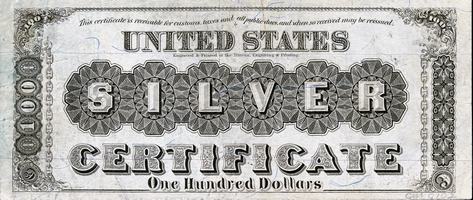
James Monroe
 CLICK HERE to see the 1878 note
CLICK HERE to see the 1878 note

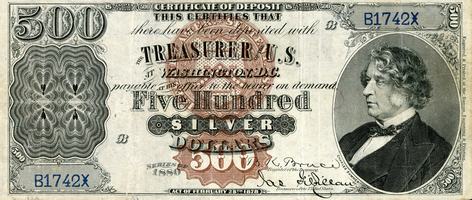
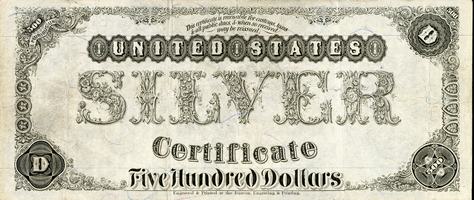
Charles Summer
 CLICK HERE to see the 1878 note
CLICK HERE to see the 1878 note

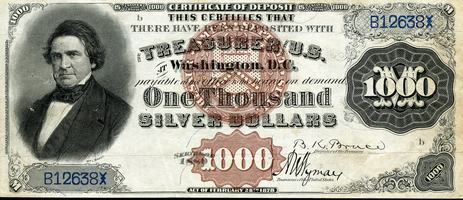
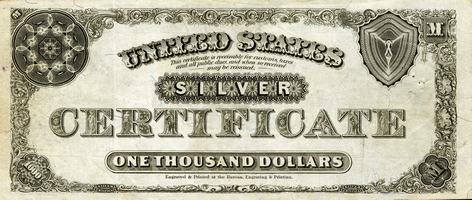
William Marcy
 CLICK HERE to see the 1878 note
CLICK HERE to see the 1878 note

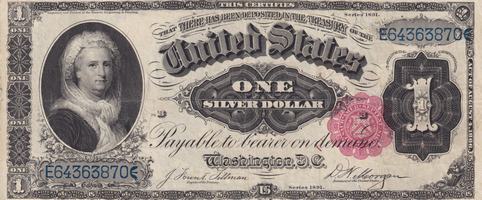
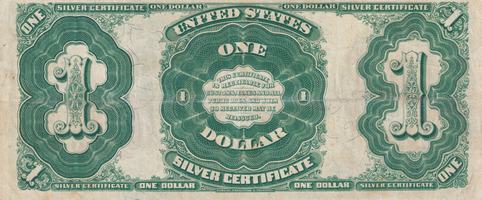
The first $1 Silver Certificate ever issued, and a must-have for every collection! A portrait of Martha Washington, the wife of George Washington, is on the face. The back was simplified from the 1886 version to prevent photographically produced counterfeits.
 CLICK HERE to see the 1886 note
CLICK HERE to see the 1886 note

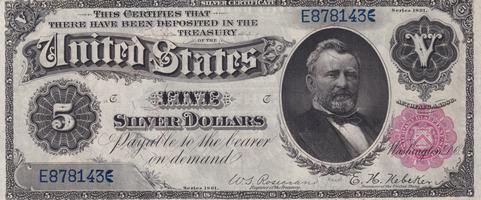
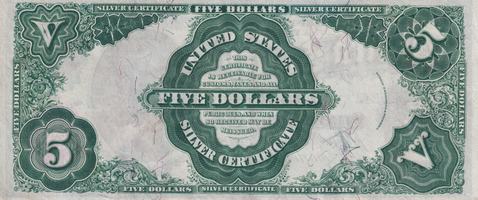
A portrait of Ulysses S. Grant appears on the face. The 1886 note has a unique back design featuring five Morgan silver dollars in a highly detailed engraving.
 CLICK HERE to see the 1886 note
CLICK HERE to see the 1886 note

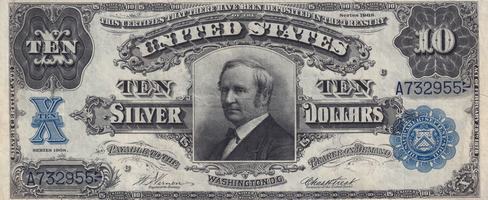
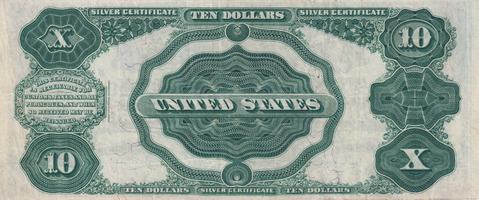
Series 1908 shown - Thomas Hendricks
 CLICK HERE to see the 1886 note
CLICK HERE to see the 1886 note

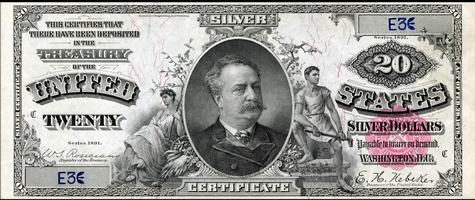
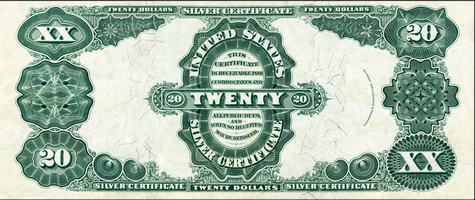
Daniel Manning
 CLICK HERE to see the 1886 note
CLICK HERE to see the 1886 note

The original plan was to eventually have this type of artistic and educational design used on all denominations of silver certificates from the one dollar to the one thousand dollar note. The $1, $2 and $5 denominations were printed and released.The plates for a $10 note were engraved but notes were never issued as the Act of Congress of August 4, 1886 did not authorized them.
The names of 23 famous Americans frame the allegorical figures of History instructing Youth, on the face. Illustrated are the city of Washington as it appeared over 100 years ago, the Washington Monument, the Capitol Building and the first two pages of the Constitution as an open book. A factory with its smokestack appears, illustrating America's pride in manufacturing.
George and Martha Washington appear on the reverse.
A mature "Science" presents youthful "Steam" and "Electricity" to Commerce and Manufacture, also represented by mature ladies. This note was considered somewhat risque in its time. This design was originally planned to be used on the $50 note.
Robert Fulton (American artist, engineer and inventor) and Samuel Morse (American painter and inventor) appear on the reverse.
The central winged allegorical figure of Electricity Presenting Light to the World appears as the primary theme of the note's obverse. Jupiter, at left, rides his steeds with thunderbolts. Fame, at lower center, blows her trumpet and Peace, with a dove, appears at the right. The Capitol Building and the White House appear in the background.
On the reverse appear Union soldiers Grant and Sheridan.
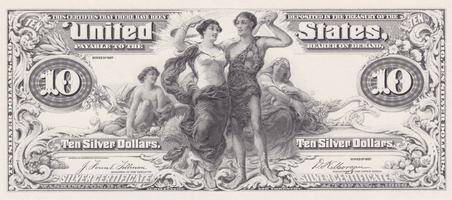
The proposed design for the 1897 $10 note entitled "Agriculture and Forestry".
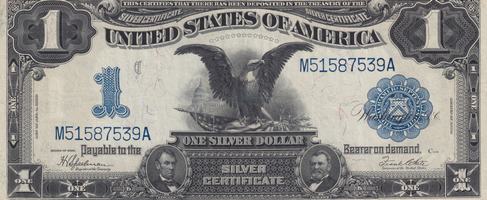
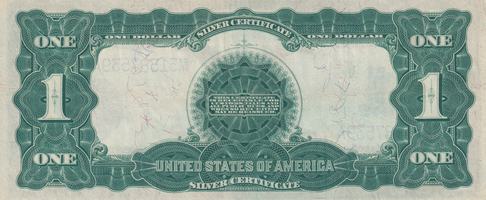
The vignette on this note is titled Eagle of the Capitol, but it is nicknamed "Black Eagle." Portraits of Lincoln and Grant are beneath the denomination on the face. An engraved design with an obligation is on the back.
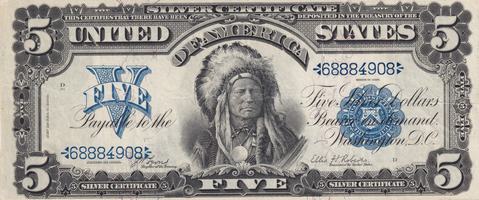
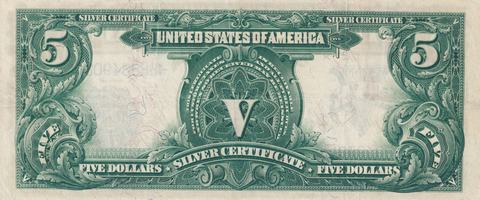
In 1868 the Chief Running Antelope penned his signature on the "Treaty of Fort Laramie with the Sioux". He received a medal featuringPresident Andrew Johnson for this and four years later was invited to Washington to meet the president.It was at this visit that he sat for famed photographer "Alexander Gardner" who took photos, both a full face and a profile shot.
In this photograph he was ONLY wearing three feathers in his hair, fur braid wraps, and dentalium earrings, and holding a wing fan and a piece pipe.Very interesting, look at the note and you will see he's wearing a medal, the very medal (featuring President Johnson) that he received for signing the 1868 Treaty.While the portrait is labeled Onepapa, it is incorrect, his tribe was ONCPAPA pronounced Hunkpapa.Chief died in 1896 and never saw the printed notes since the engraving was not completed until Jan. 7, 1900. Production of the notes ran from 1900 to 1926.